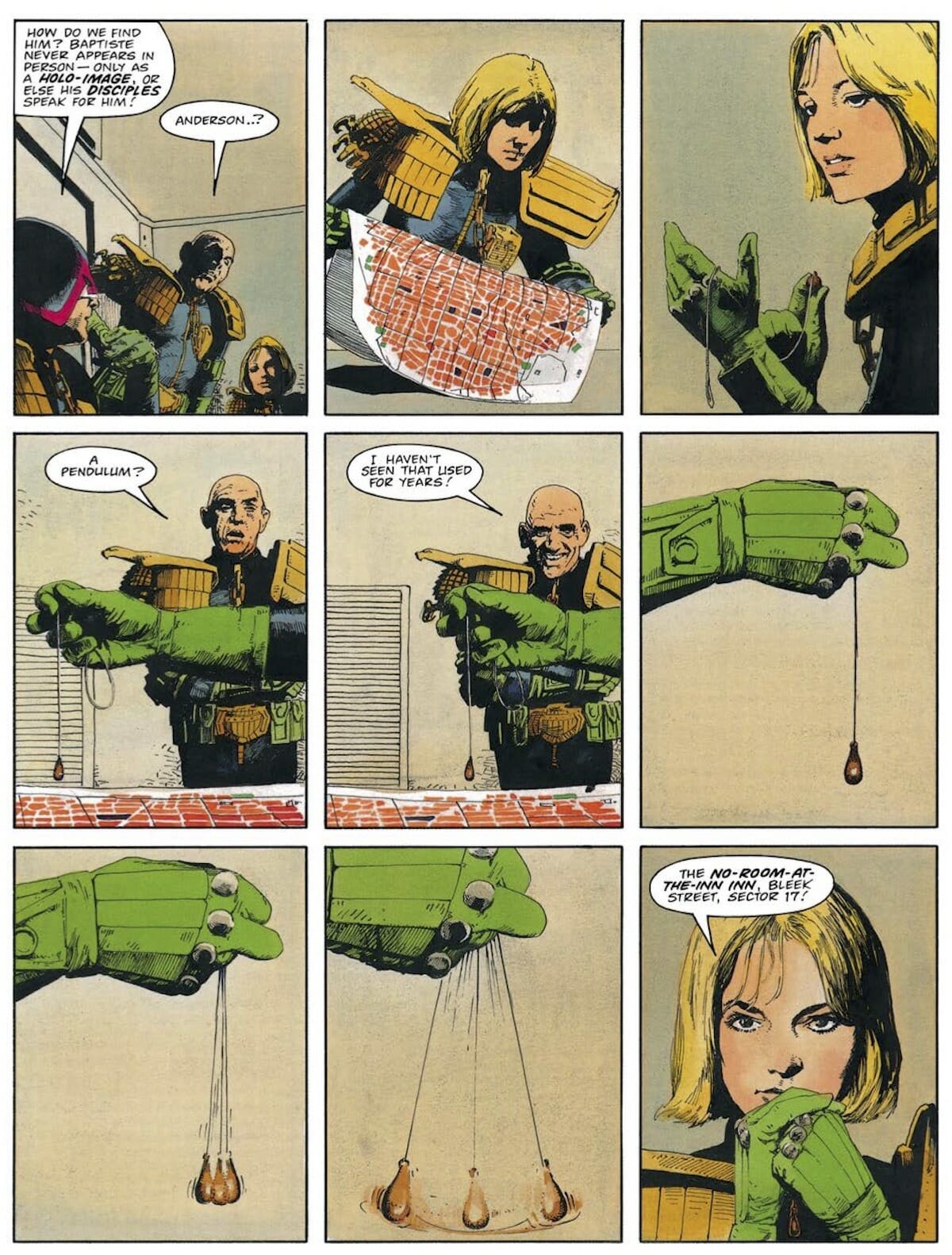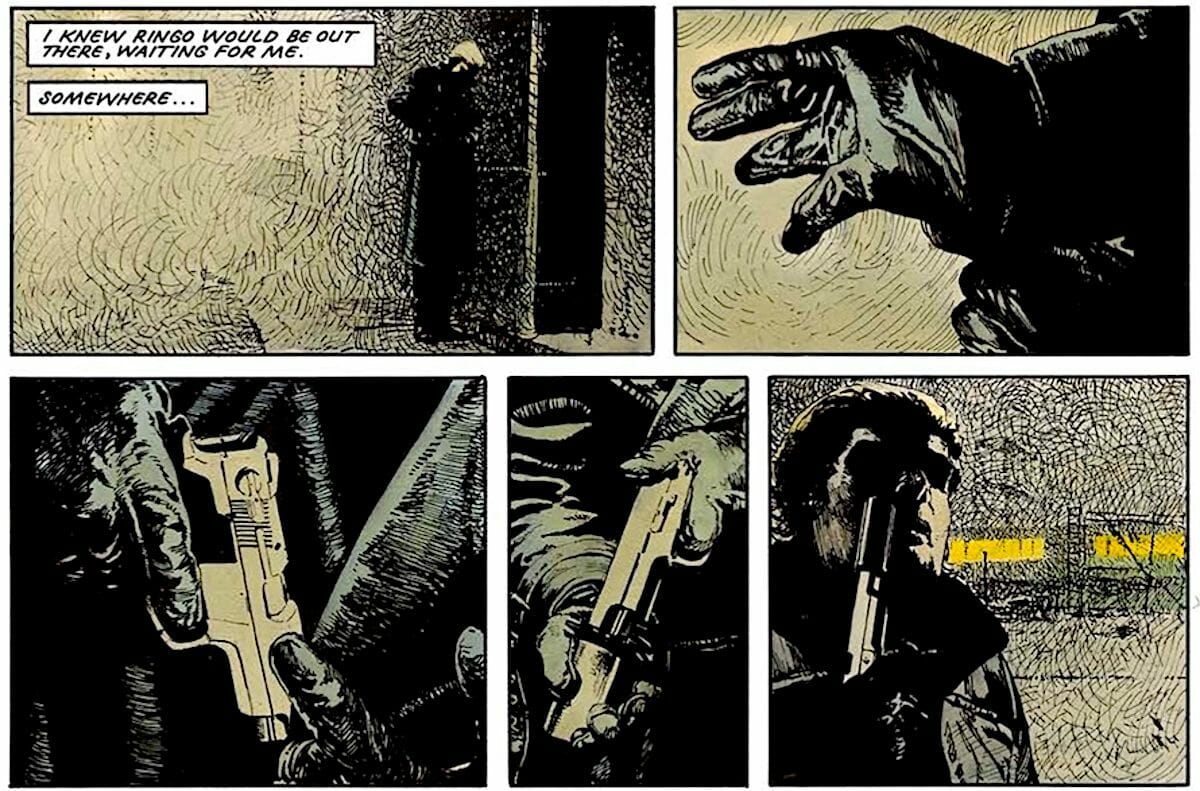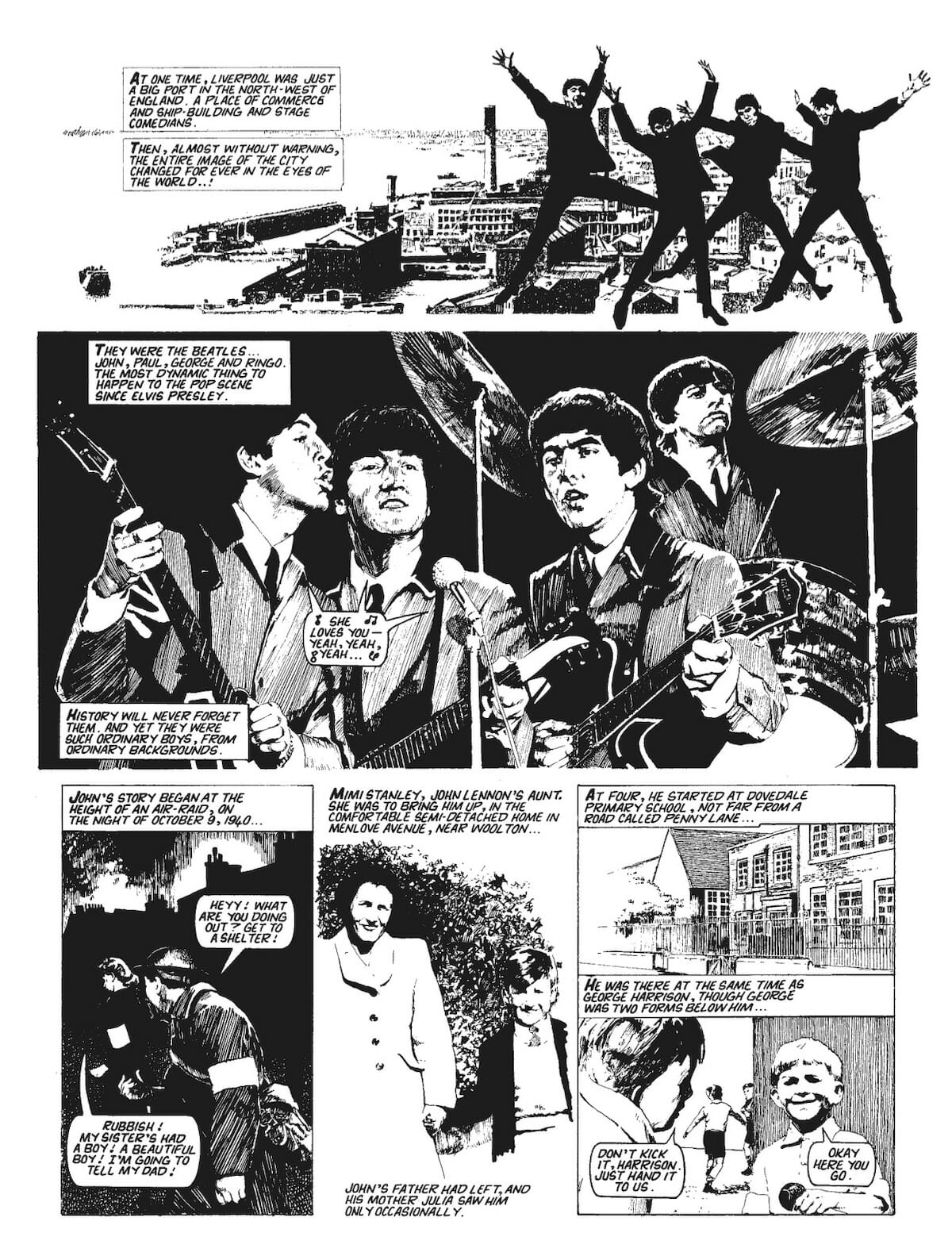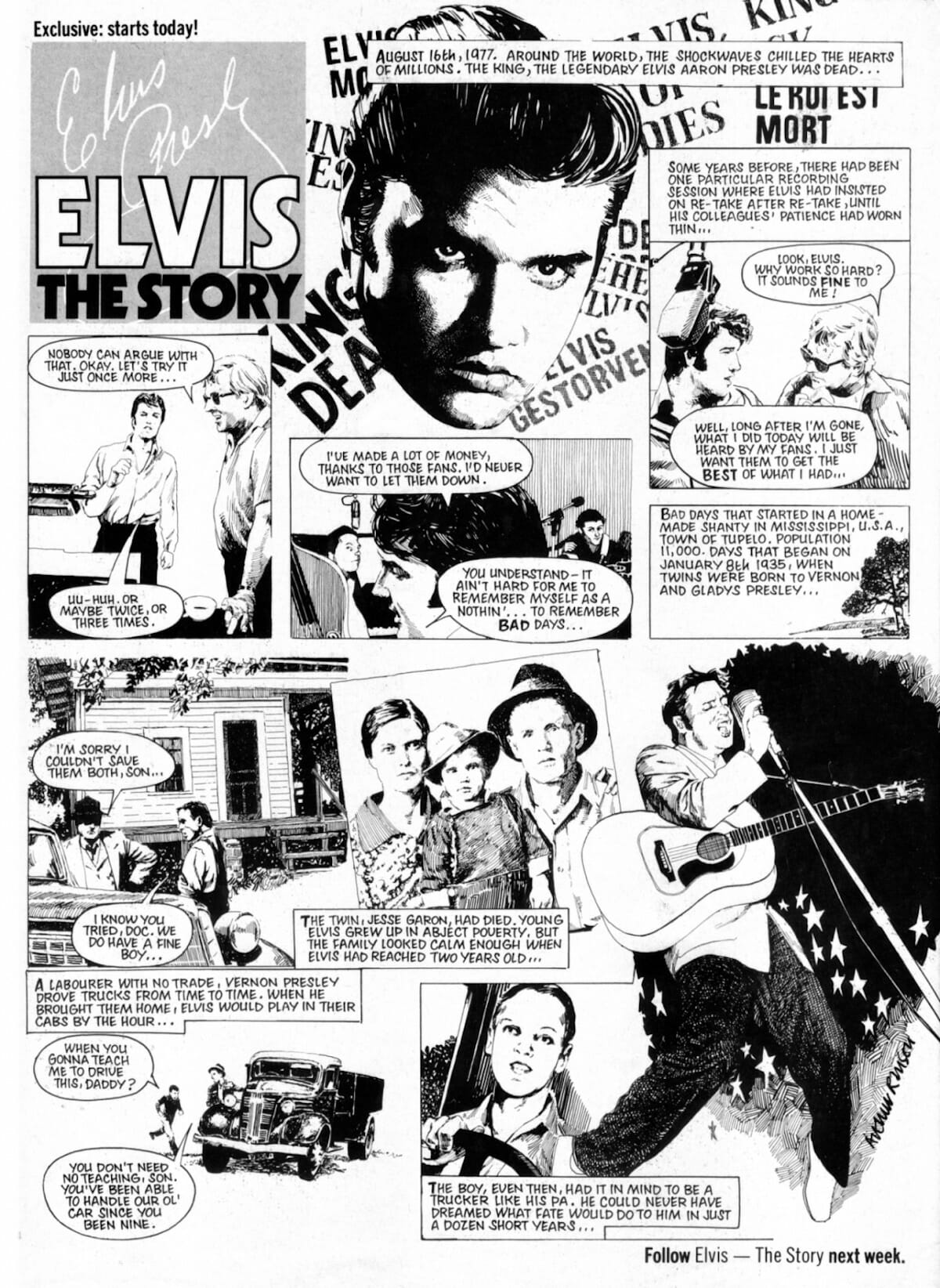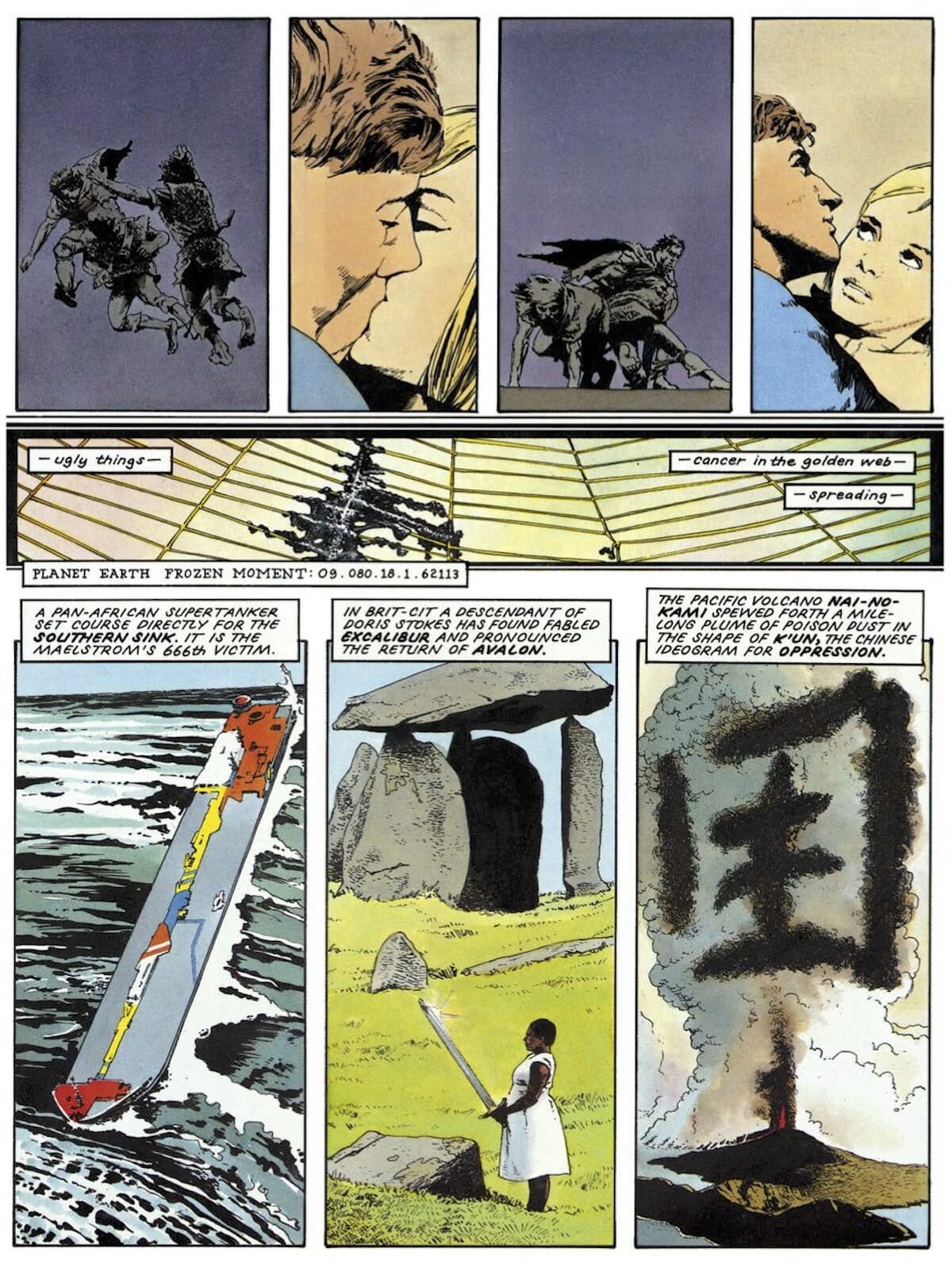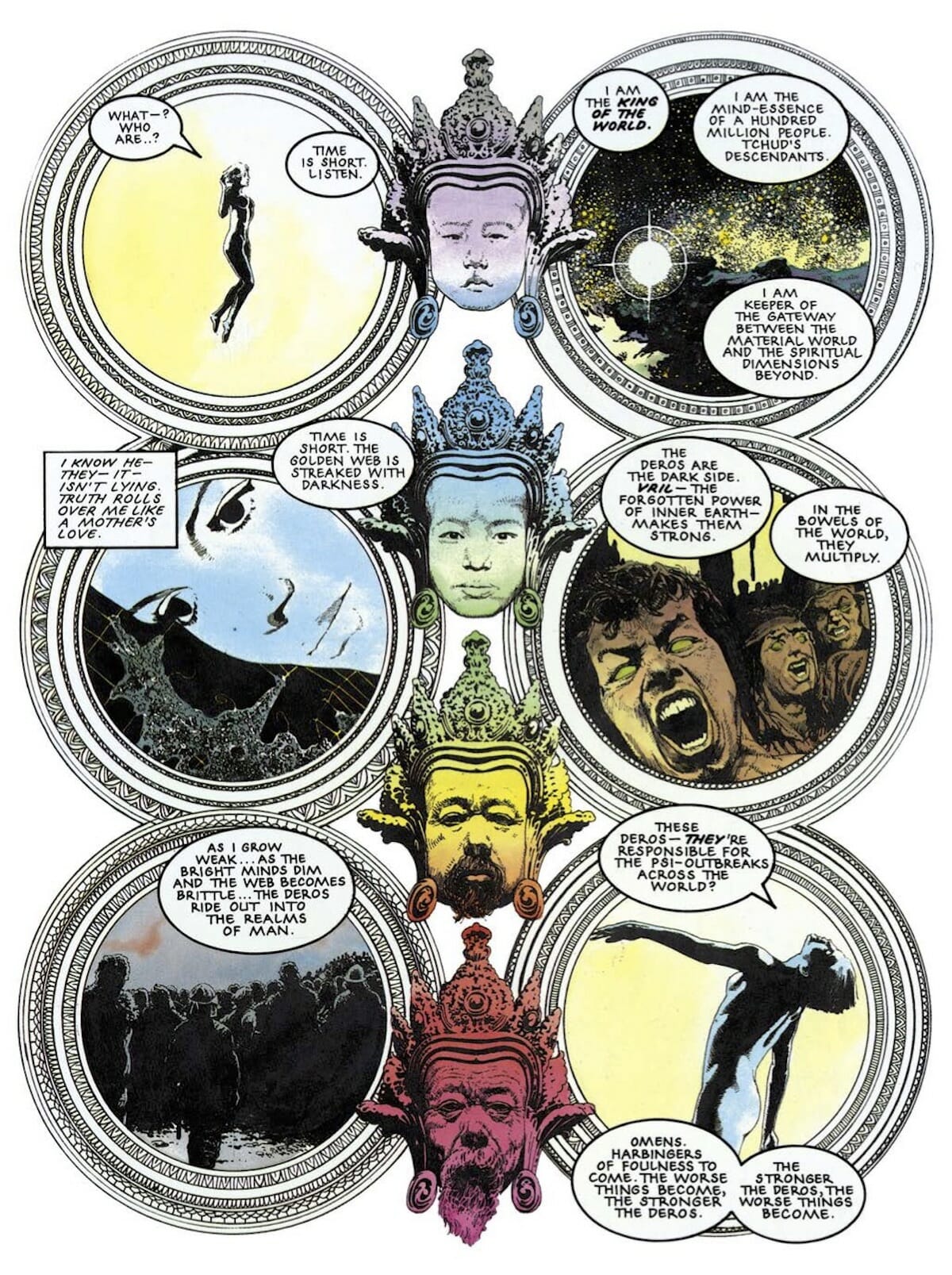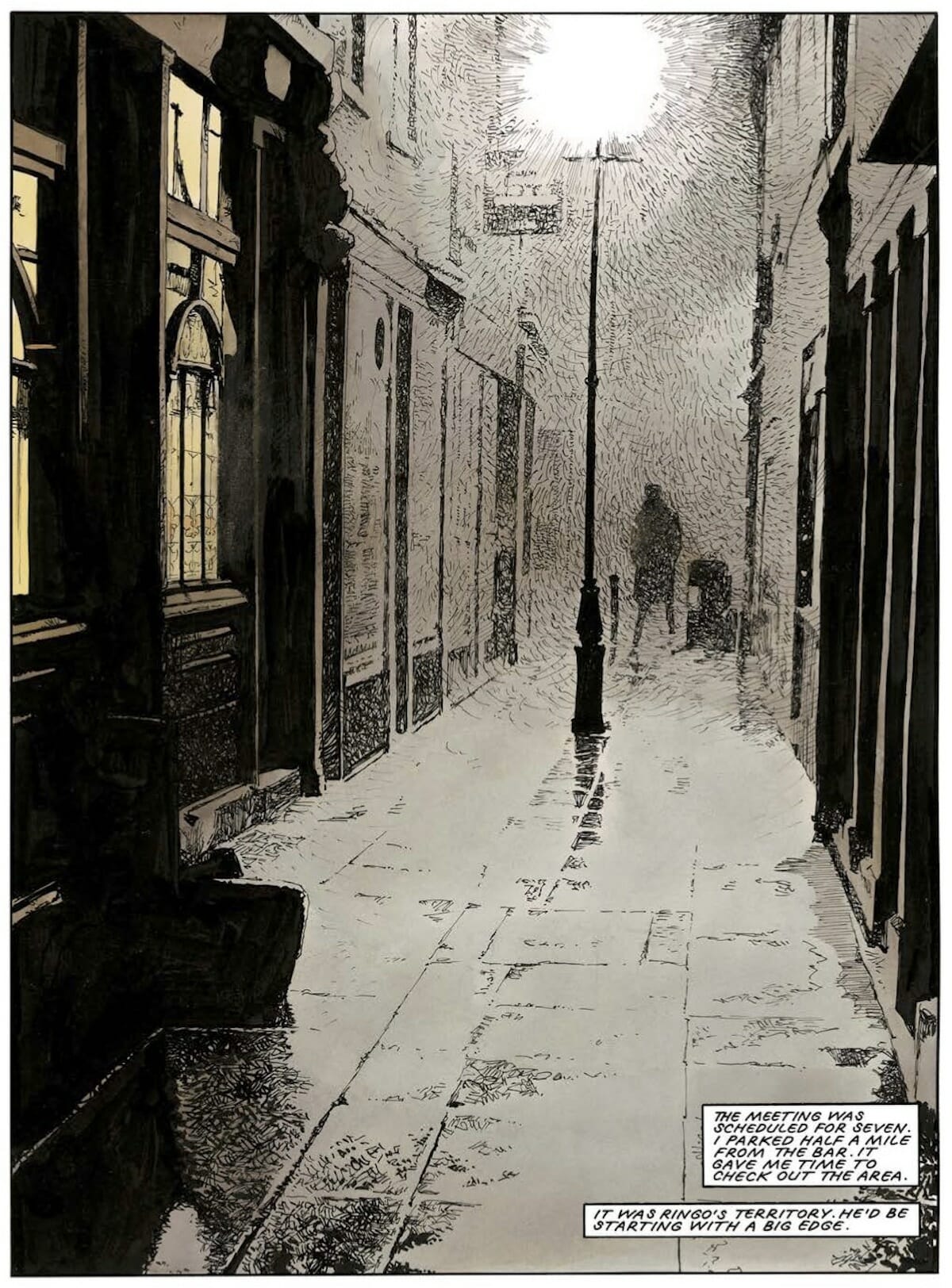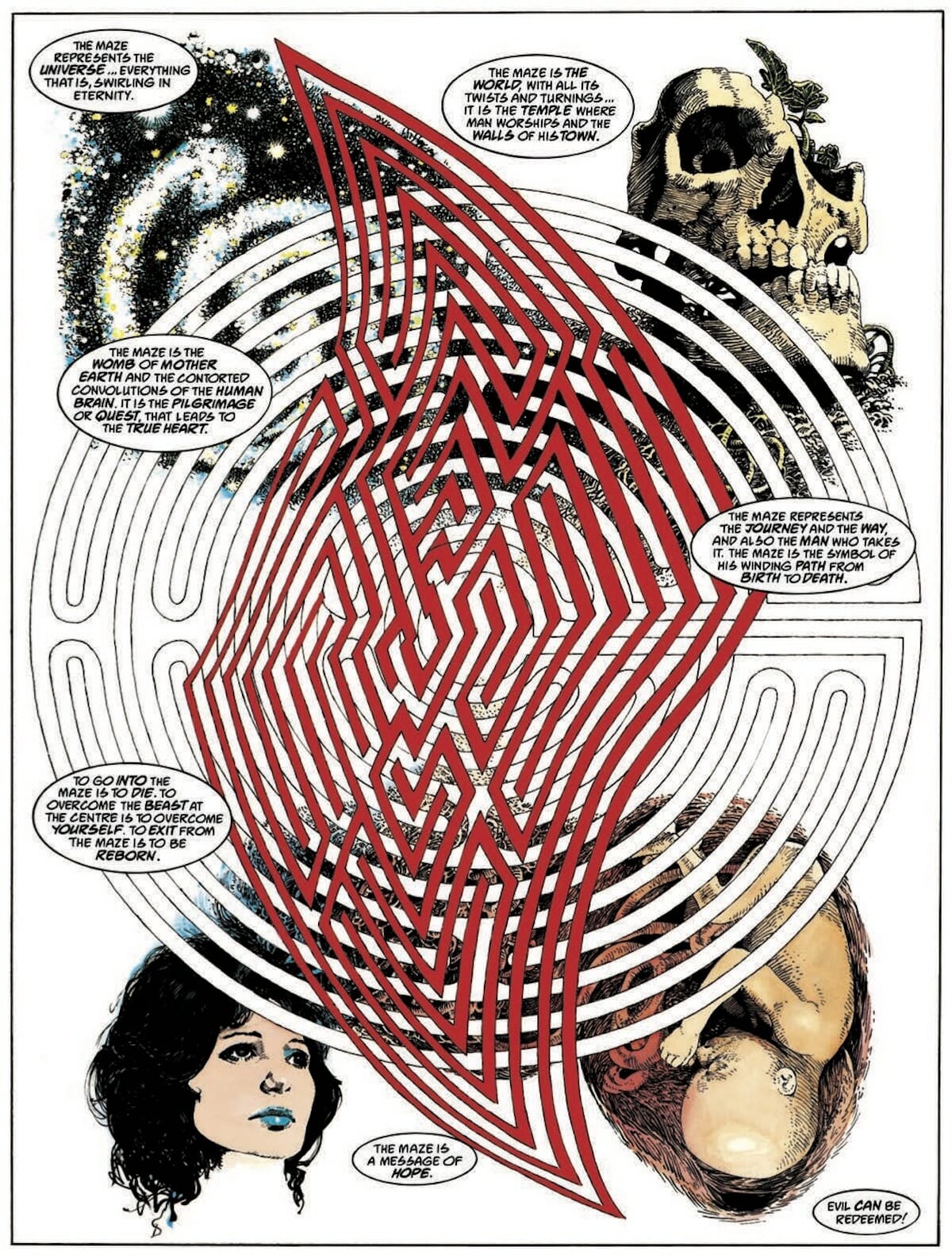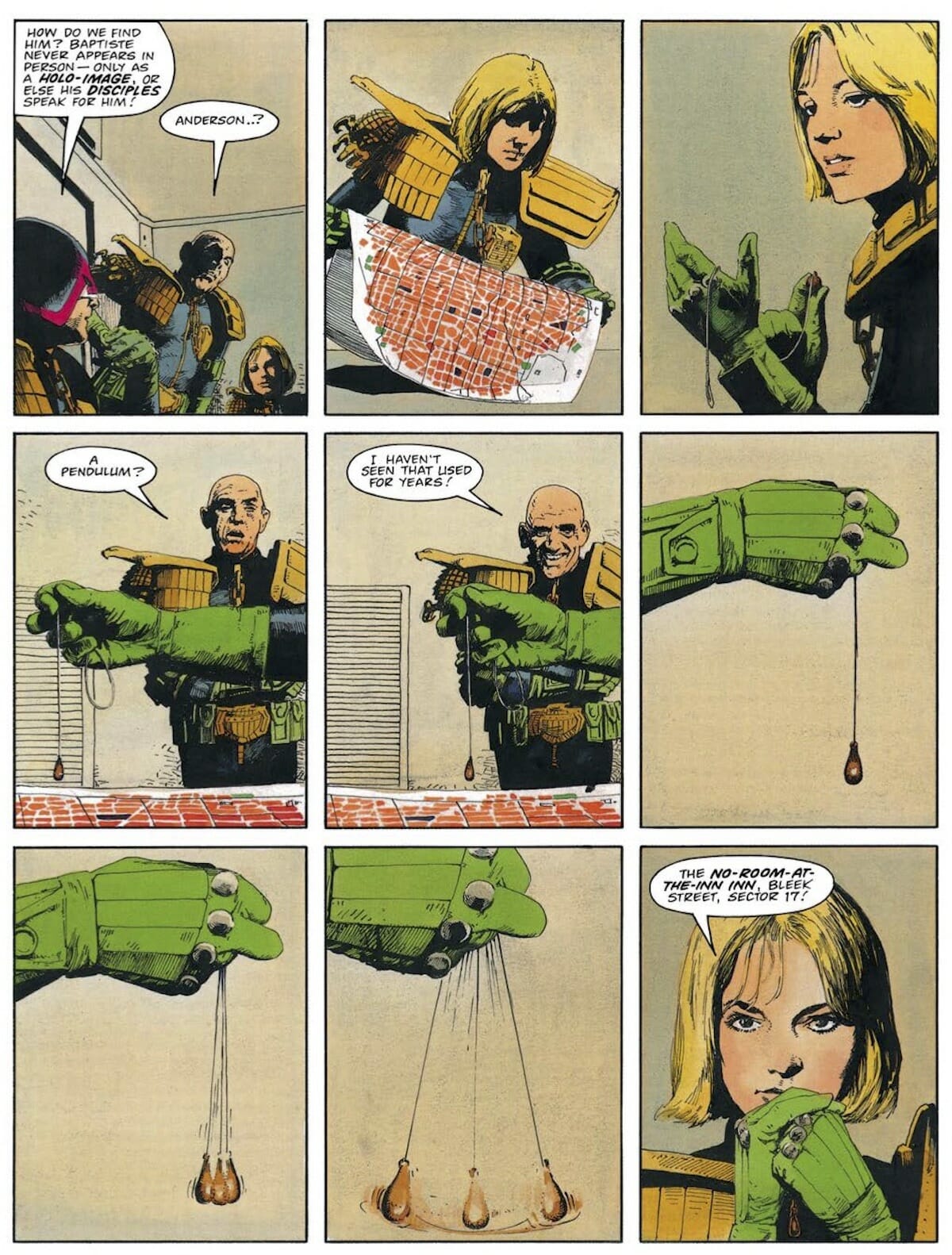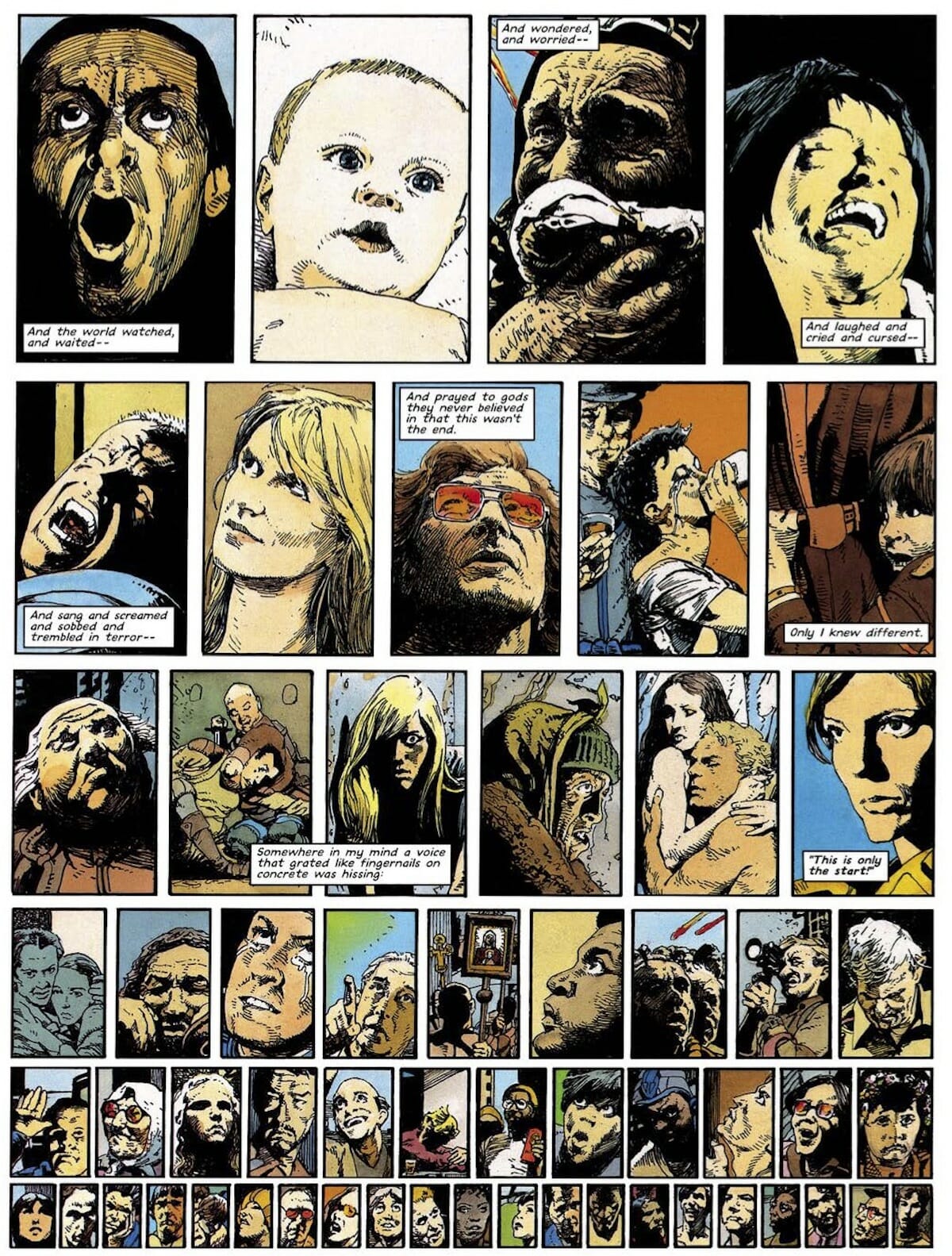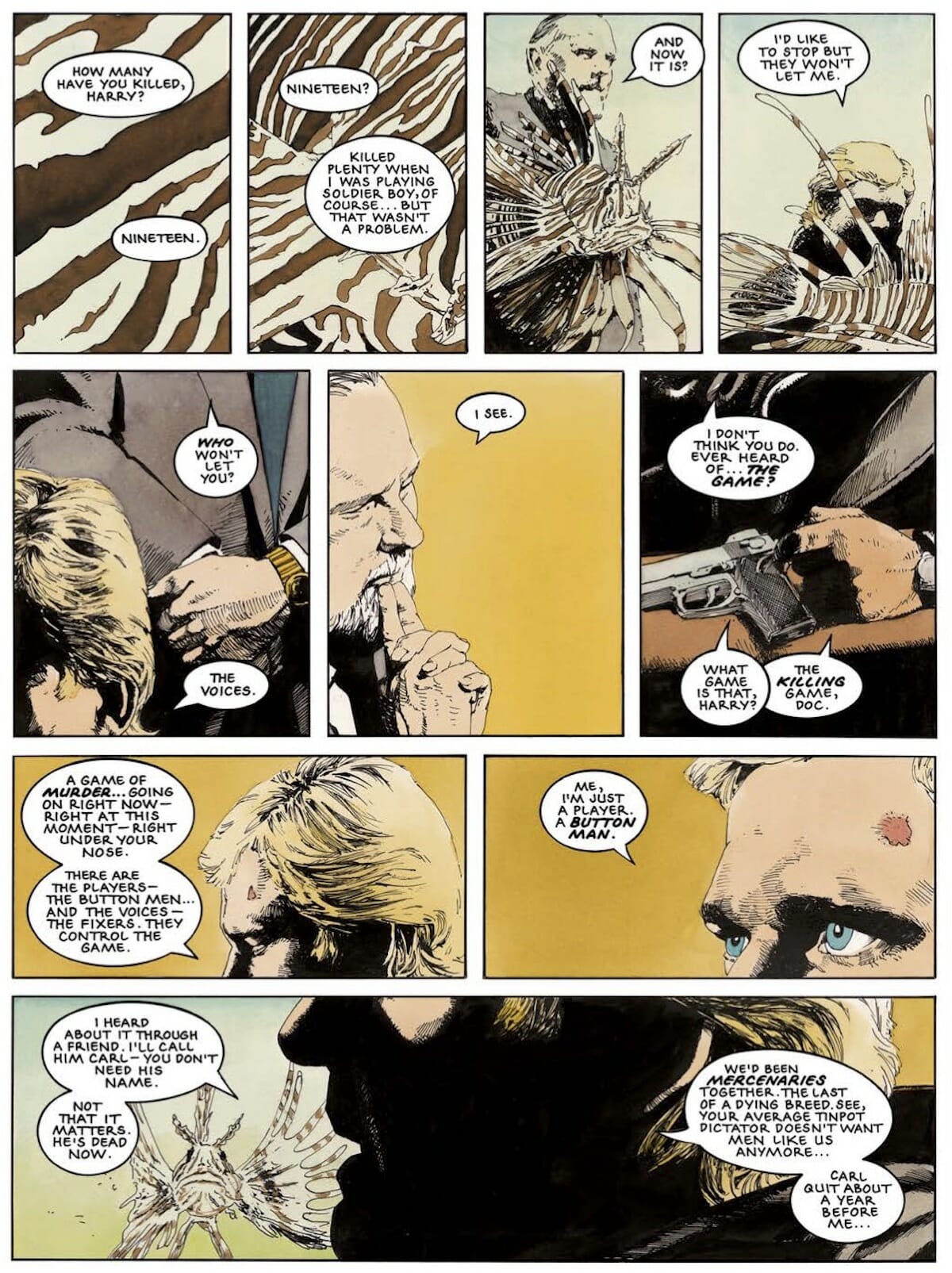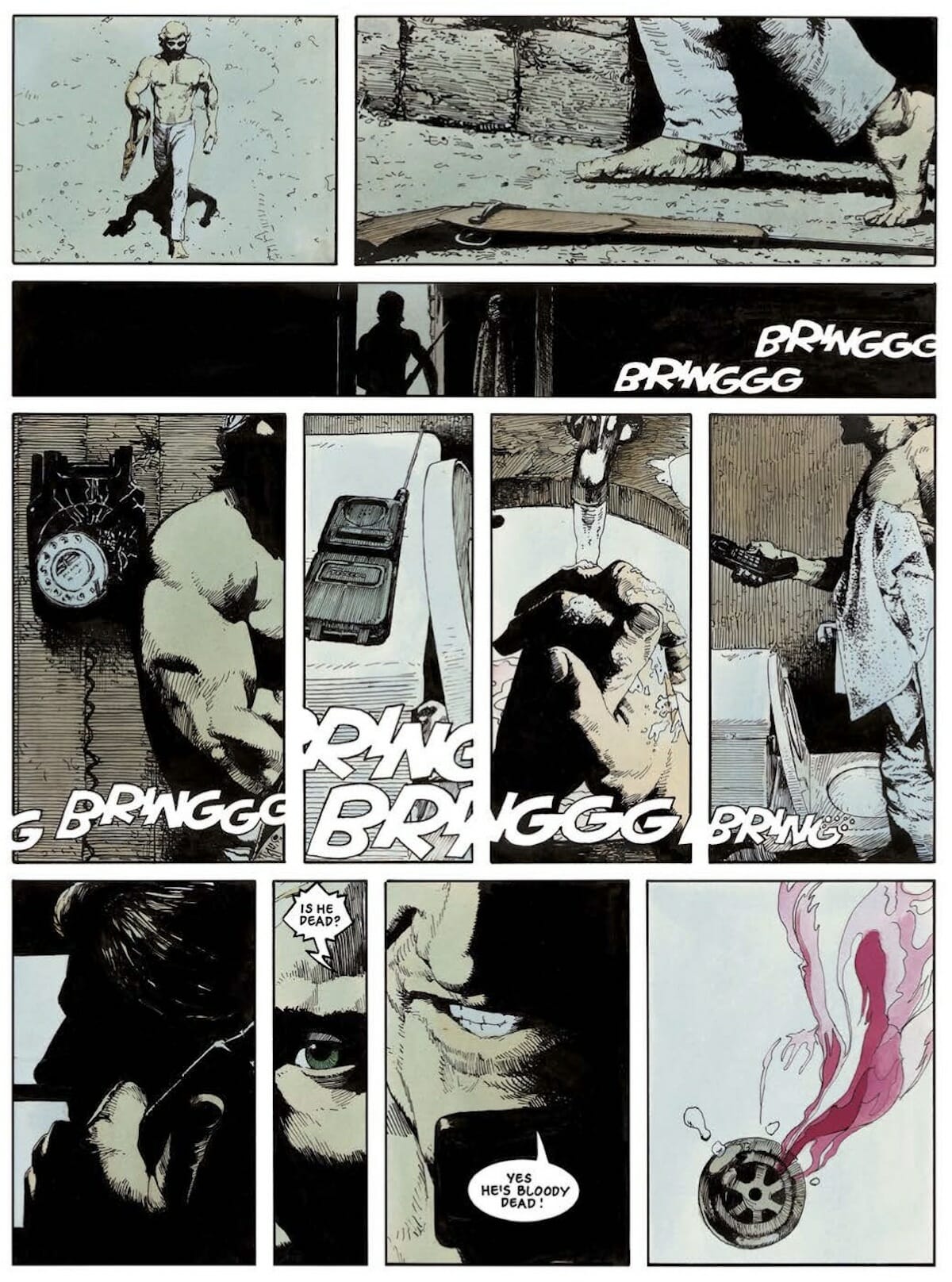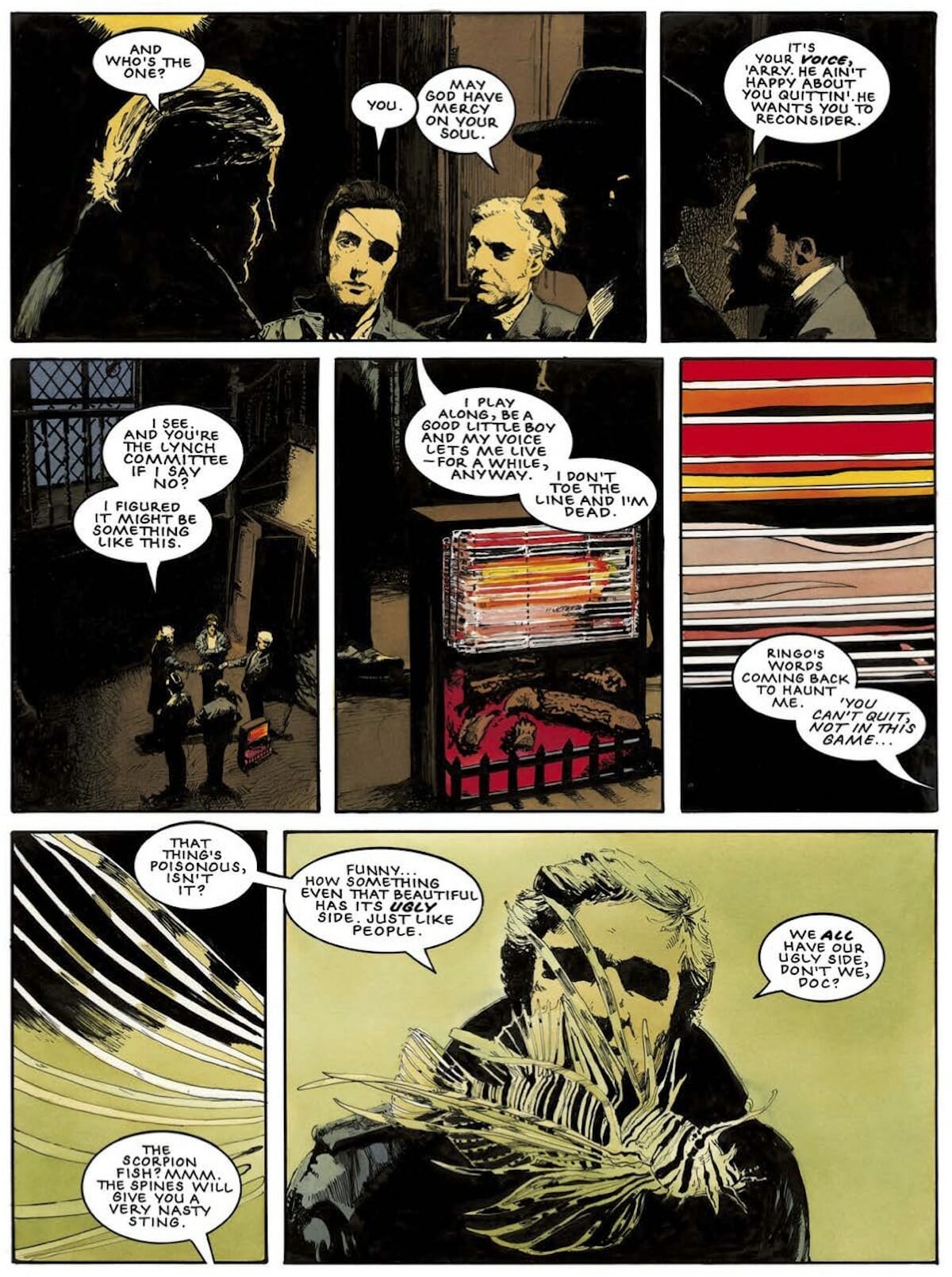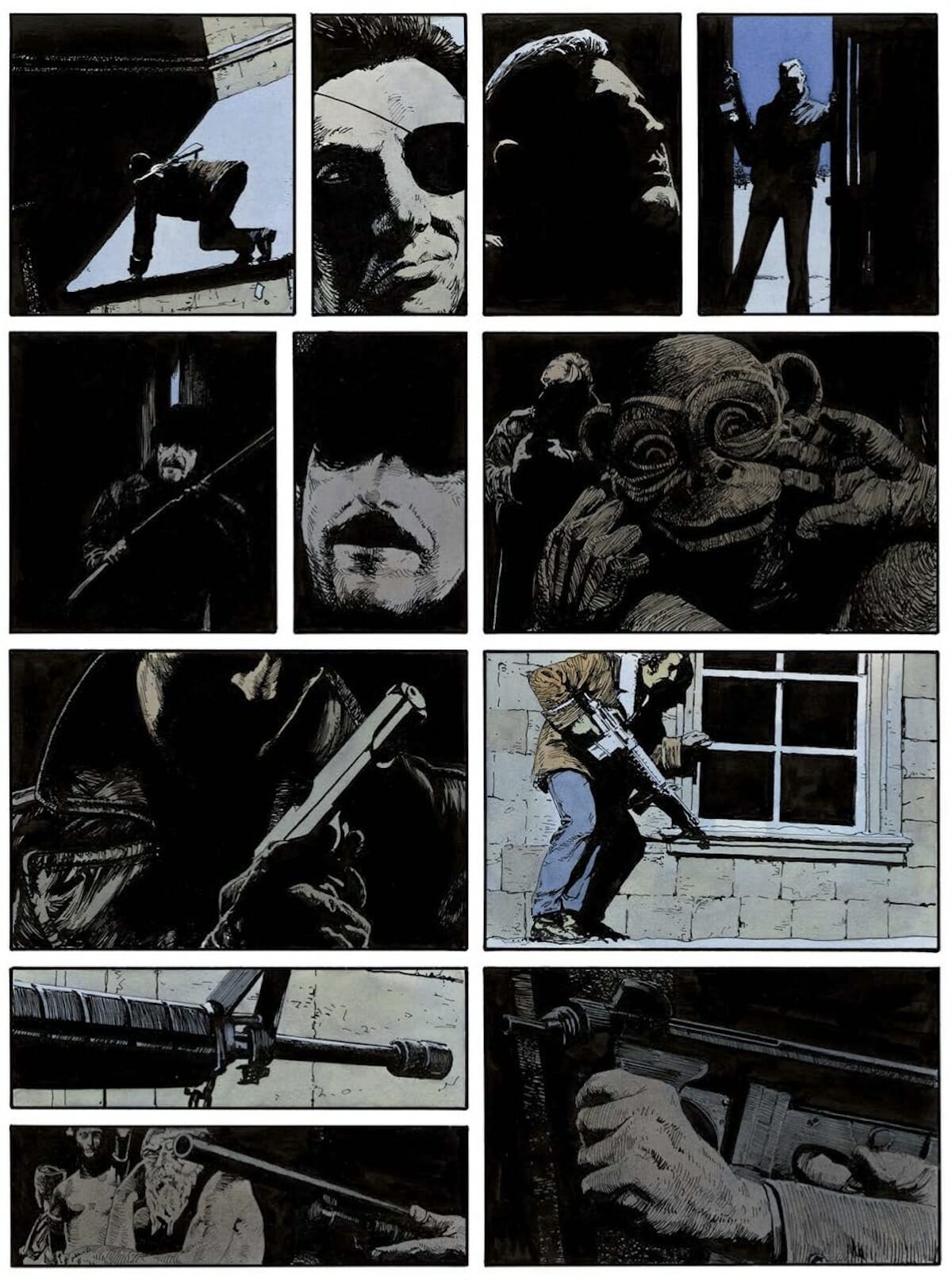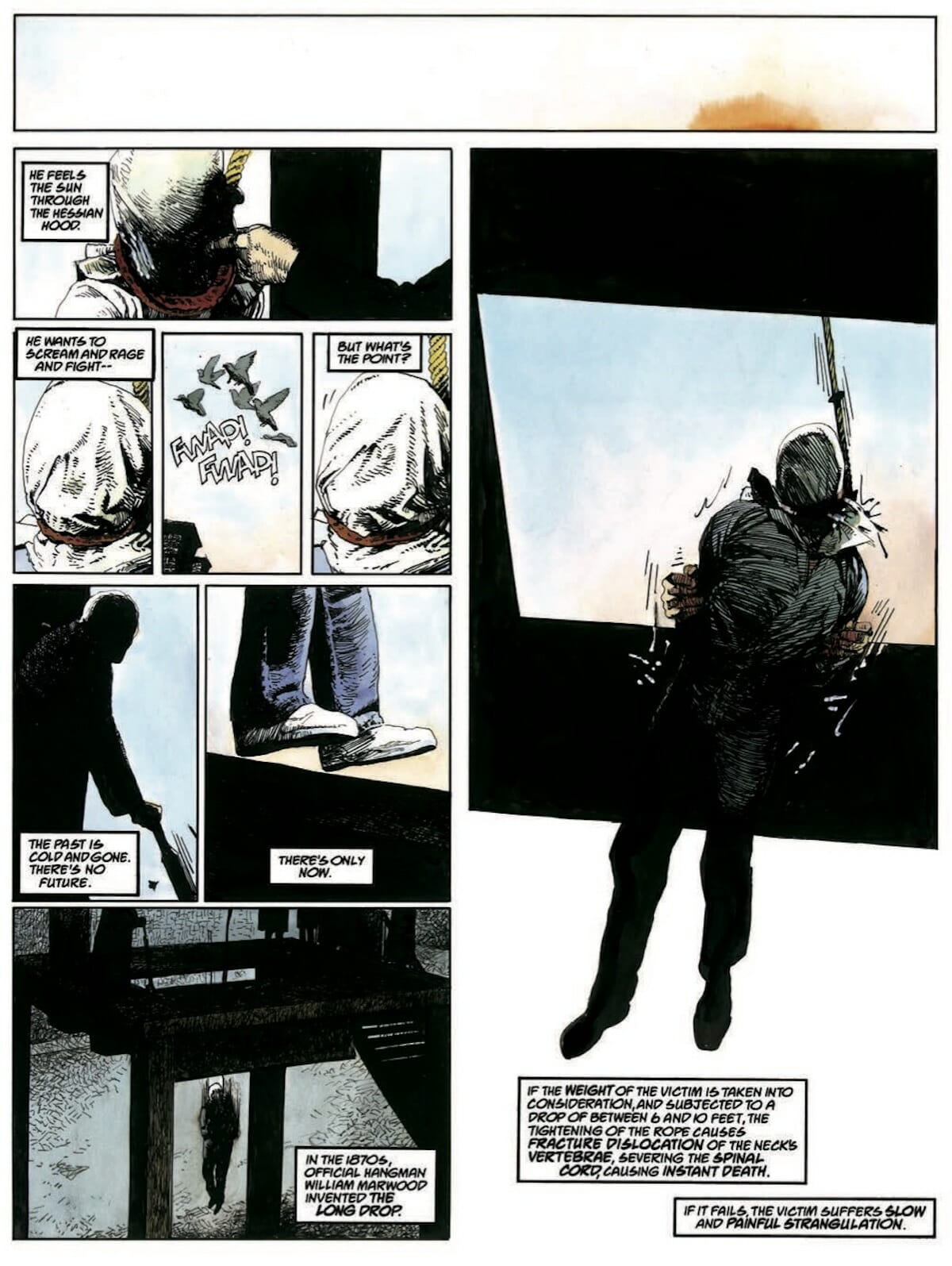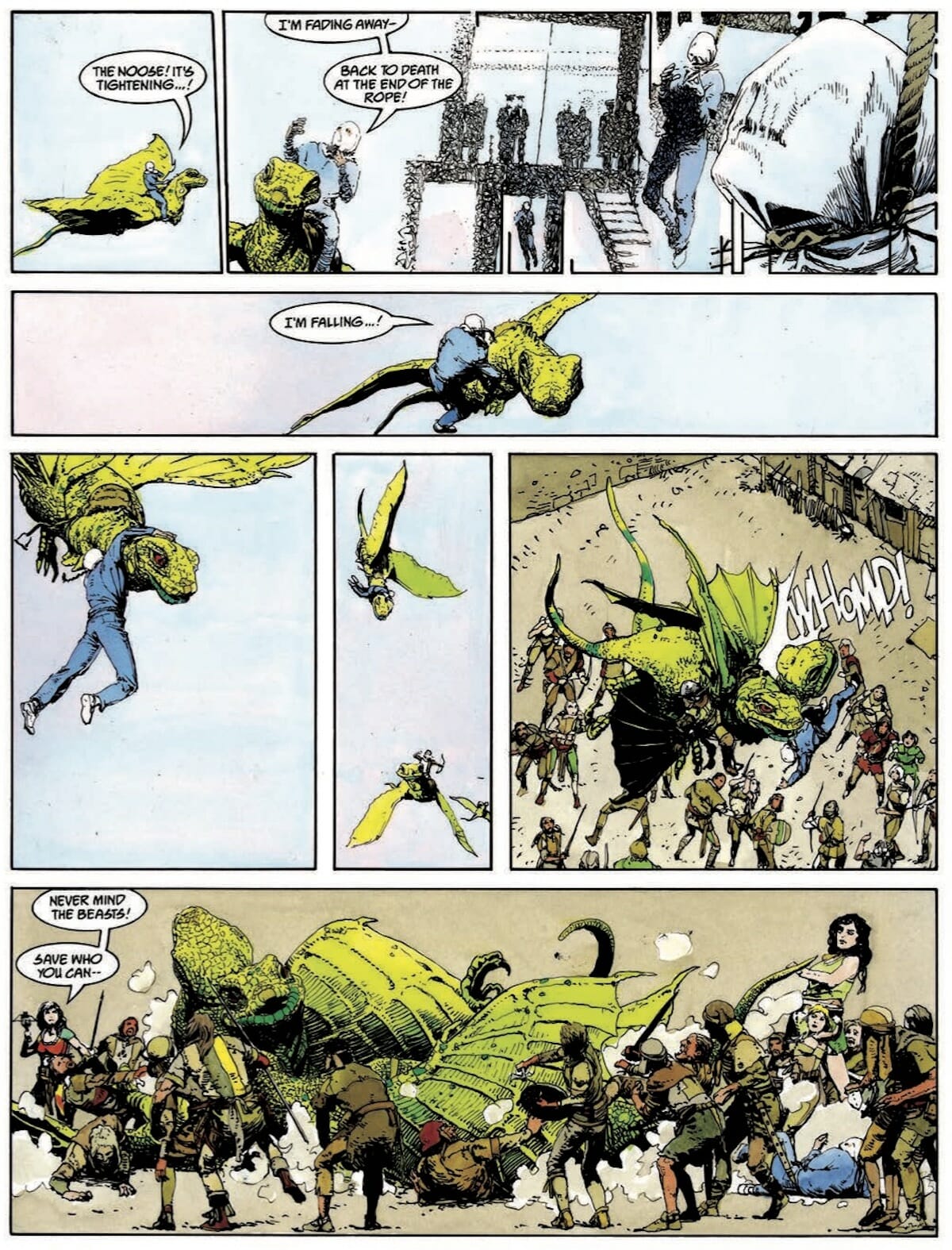For an entire generation of comic book fans who’d grown up reading the weekly junior celebrity anthology Look-In, Arthur Ranson was a comforting, unchallenging presence — which made his later work on 2000 AD all the more surprising, and almost even more impressive. It’s finally time to appreciate one of Brit Comics’ finest, and most unassuming, talents.
Ranson’s early days as a professional artist speak to an era that doesn’t really exist anymore. Despite an early interest in comics — Dan Dare creator Frank Hampson being a particular favorite — he didn’t originally intend to be a comic book artist. Instead, he trained as a designer for stamps and banknotes, with a focus on working in near-impossible small scale watercolors. From there, he’d work as a calligrapher for a cardboard box manufacturer, and later a corrections artist at a commercial art studio, before finally breaking into comics via the little-remembered Look-In.
Subtitled the “Junior TV Times” — the British version of TV Guide — Look-In was a mixture of TV listings, celebrity features, and comic strips based on the small screen hits of the day, with each episode running an exceptionally busy two pages per issue. Strips weren’t limited to just shows from the United Kingdom, although series like Worzel Gummidge and The Tomorrow People ran for some time in the title; U.S. shows like CHiPs, Knight Rider, and Charlie’s Angels were favorites of readers for some time, even when the shows weren’t on air.
It also wasn’t only live-action shows that got the strip treatment, with cartoons like Dogtanian and the Three Muskahounds, Scooby-Doo, and even Garfield making appearances throughout the title’s 23-year run. Outside of television properties, Look-In also ran serialized biographies of musical acts like the Beatles, ABBA, and, somewhat surprisingly the Sex Pistols. It was, as might be becoming increasingly apparent, a one-stop shop for young readers looking to understand the pop culture of the day, and Ranson was right in the middle of it.
He first signed onto the title as a cover artist, but soon moved inside as the artist on a number of music strips — telling the life stories of artists from Elvis Presley to Haircut One Hundred, and no, you’re far from the only person reading his who’s never heard of them — as well as illustrating strips based on Sapphire & Steel, The A-Team, The Bionic Woman and, of all things, Danger Mouse and Count Duckula, the two animated series from British animation house Cosgrove Hall. Each of these strips featured the sensitive line work and photorealism that Ranson would later become known for, but otherwise, they demonstrated both a versatility and attention to detail that saw him create pitch-perfect work no matter what the source material was.
Because of that ability to disappear inside the property, Ranson sadly almost seemed invisible as an artist in his own right, even when he appeared in rare outings outside of Look-In’s pages. (He worked as a freelancer on ad campaigns and editorial illustrations when not bringing kids’ television dreams to the page, while also dropping in on work from Marvel’s UK offices.) That’s far from a complaint; just the opposite — he was doing such good work that readers saw the characters as they would appear on screen, and little else — but it meant that Ranson wouldn’t truly get the due he deserved until he teamed up with writers Alan Grant and John Wagner for new thrills over at the Galaxy’s Greatest Comic.
Although Ranson started on 2000 AD with a one episode Judge Dredd story, it was the Dredd spin-off series Anderson: Psi Division where he first truly made his mark on the title — and was given the opportunity to shine as an artist. His Anderson work, which started in 1989 and continued on an irregular basis until 2005 with each storyline written by longtime series writer Alan Grant, not only allowed him the chance to work in color, but to stretch his page design chops in a way that he’d never been able to before.
Part of that was Grant’s writing, and the space it afforded Ranson to experiment and, for want of a better way to put it, show off — while 2000 AD’s traditional episode length of five pages may seem short to an American audience, it was still more than twice the length of a Look-In strip, and the freedom that gave Ranson, when paired with Grant’s eagerness to write material that trended towards the metaphorical, allegorical, and existential on the Anderson series in order to differentiate it from the more straightforward, brutal Dredd, allowed the artist to blossom in a way that longtime followers of his work were unlikely to expect.
The Ranson on display in Anderson was one who showed a mastery not only of line, but also of color and pacing, creating an ability to control the tonality and atmosphere of the reading experience that stood alongside some of the greats of European comics, without seeming overly indebted to anyone. His art also stood alone in 2000 AD, being an ongoing study in stillness and restraint compared with such talents as Simon Bisley, Mick McMahon, or Henry Flint; having been raised through a British school of comics that downplayed dynamism and visual acrobatics in favor of finding the most compressed, most speedy method of transferring information to the reader as possible, Ranson’s Anderson art was work in which every choice was deliberate, painstaking, and in the service of the story above all.
It was also a beginning. A few years after the Anderson storyline “Shamballa” revealed just how deep Ranson’s talents were, he teamed with Grant’s former writing partner John Wagner to co-create Button Man, a slow-burn thriller about an assassin turning on the structure that he existed within. Cinematic in a way that few comics manage to achieve, the star of the show wasn’t Wagner’s traditional humor or wordplay — indeed, it’s a series that veers away from many of the writer’s tics — but Ranson’s breathtakingly beautiful art, which finds unlikely moments of poetry amid the violence and death of events, and transforms certain sequences — a chase in the fog in the first serial, for example — into masterclasses on how to create heart-stopping moments of tension and release.
As the first series of Button Man ended in the early 1990s, Ranson continued to work with Grant on further Anderson storylines as well as an entirely new concept, Mazeworld — a fantasy series that expanded on some of the existential themes of Anderson, with Grant purposefully writing to Ranson’s request of a fantasy strip, with no humor. The result was something that gave the artist a chance to create a new visual world, with a visual language to boot, resulting in what may have been the most impressive work of his career.
Clearly, many thought so; soon after, Ranson’s work started appearing in U.S. comics from DC and Marvel, but he didn’t stay on that side of the Atlantic for long, finding superheroes far from a comfortable subject. Instead, he returned to 2000 AD for more Anderson and further Button Man, demonstrating the reliability and comfort that younger readers had known decades before with his earlier work even as he continued to push boundaries visually.
Years after his retirement, Ranson’s work remains unsung, and perhaps he’d appreciate that; he was far from a man who’d make a lot of noise in terms of self-promotion, after all, preferring to show up, do the work to the best of his ability, and then leave quietly. But when the work is this good, maybe it’s worth bucking conventions slightly to make it clear: Arthur Ranson quietly became one of the most vital talents, and shining lights of the British comic scene.
